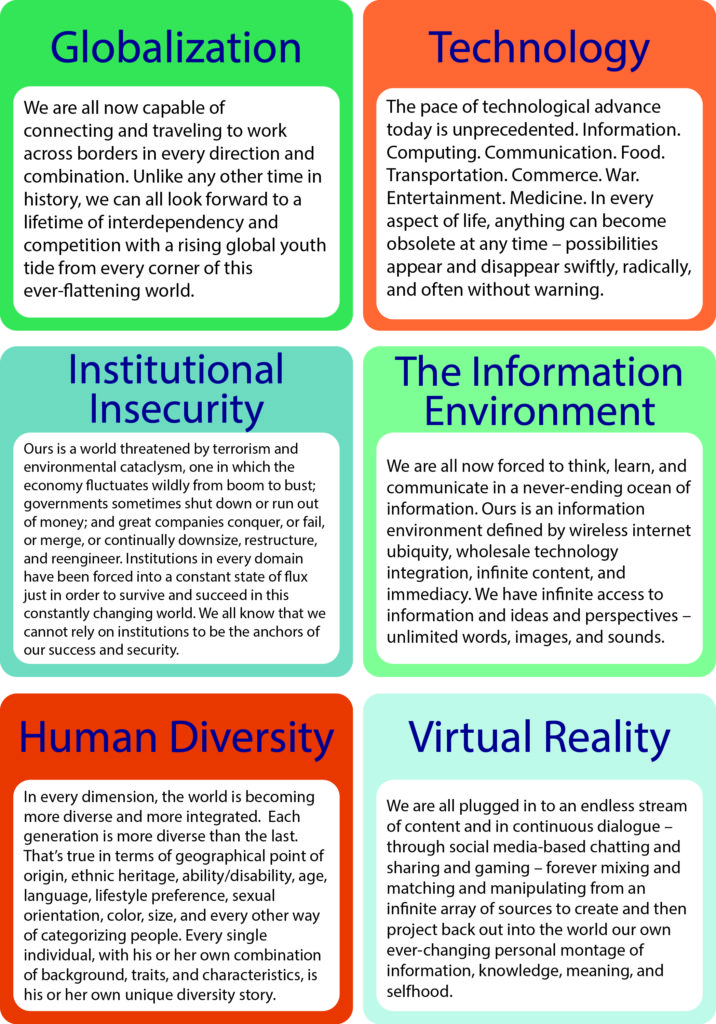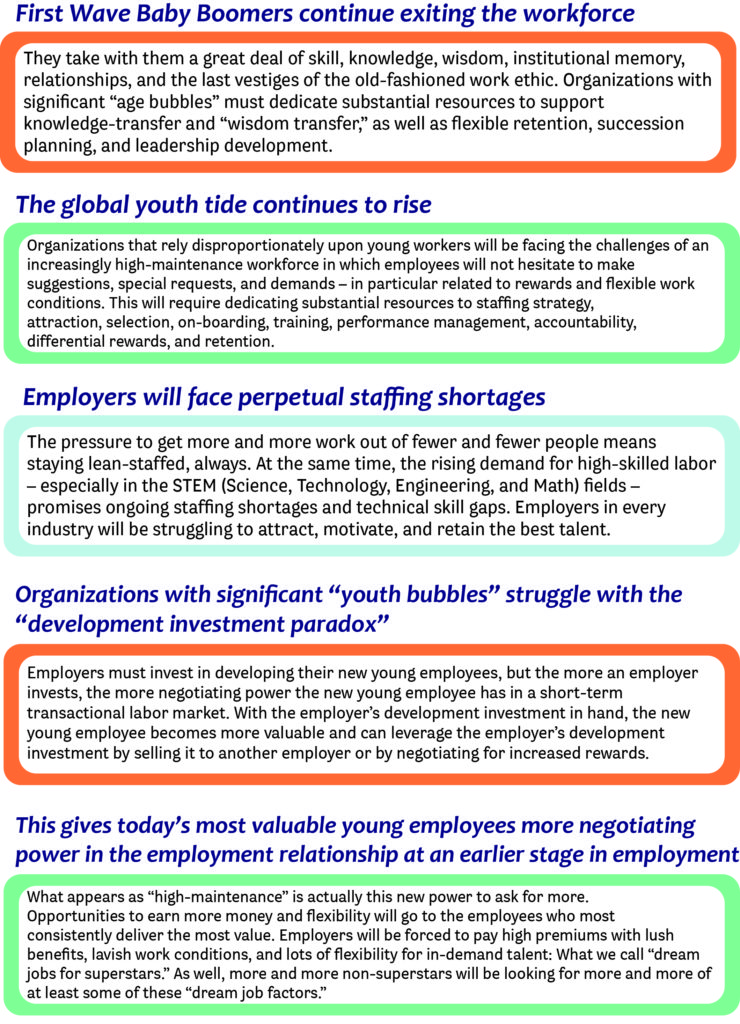The Great Generational Shift – How Employees Are Changing
4 Min Read By Bruce Tulgan
Why is this generation gap different from most?
Throughout most of history, in most societies, every new generation has come along with new attitudes and expectations that differ – at least in part – from those of previous generations. That’s why every new generation prompts a “generation gap” of sorts.
Today’s generation gap, in contrast, is about much more than a clash of styles and preferences; much more than the creative energy of youth challenging the cautious wisdom of experience; more than the new butting up against the old. The “Generational Shift” unfolding today is of historic significance, defined by the confluence of macro forces driving change at an extraordinary magnitude and pace. The Second Wave Millennials coming of age today have been shaped by those same forces of change. As such, the current generation gap is not only an important diversity issue, but also coincides with a qualitative transformation in the norms of life and work and society – at every level. Everything is changing so much and so fast that the youngest, least experienced people bring to the table a unique wisdom that comes from being in sync – much more so than older, more experienced people – with the immediate and intermediate future, like so many “canaries in the coal mine.” That’s why generational differences evident in today’s youth can serve as a powerful lens through which to understand the trajectory of today’s changing world.
Our efforts remain focused on understanding today’s changing workforce, changing workplace, changing nature of employment, and even changes in the very nature of work itself. To that end, we continue tracking the same six profound historical forces of change we’ve watched unfolding in plain sight now for more than two decades:
- Globalization
- Technology
- Institutional insecurity
- The information environment
- Human diversity
- Virtual reality
Can there be any doubt that these same six macro forces driving change continue to accelerate and continue to define the transformations evident in every aspect of life and work? Does anyone remember a year prior to 2016-2017 with more object-lessons demonstrating the impact of each and every one of these forces of change?

The Workforce of the Future is Arriving: Welcome to the Workplace of the Future
Employers in 2017 are scrambling to adjust to a new normal of change and uncertainty which is driven, not only by the forces of change outlined in the previous section of this white paper, but also by an environment of regular but unpredictable – and rather wild – market fluctuations. Indeed, that scramble has been picking up steam every year since 1993, when we began tracking the “Great Generational Shift.”
The changes we’ve been tracking are coming to fruition, maturing everywhere we look. The worldwide business environment of perpetually high risk, constrained resources, and fierce competition puts constant pressure on employers to remain lean, flexible and high-performing. Despite these pressures constraining employer resources, employers are struggling to attract, motivate and retain the best young talent – especially in the STEM (Science, Technology, Engineering, and Math) fields – as they watch their oldest, most-experienced employees ride off into the sunset. This leaves business leaders asking how they can possibly square their business needs with the now incredibly widespread workforce expectations (nay, demands) for greater flexibility in work conditions and career paths.
The workplace of the past was based on one-size-fits-all, long-term hierarchical employment relationships in which employees worked full-time, on-site, uninterrupted, and exclusively for one employer in exchange for job security and long-term vesting rewards like pensions. Nowadays, the workplace revolves around short-term transactional employment relationships. And there is no going back. Because organizations will need to continually increase productivity, quality, and cost effectiveness, employment relationships will become increasingly short-term, transactional, and highly variable. The traditional employer-employee relationship will finally fade away.
So, what does the workplace of the future look like?
So, what does the workplace of the future look like?
The workplace of the future is lean, high-performing and incredibly flexible. Any work that can be streamlined is done through highly-efficient (read: churned and squeezed labor) production – part-timers, short-termers, consultants, vendors – that can be staffed-up quickly and staffed-down just as quickly. There are significantly fewer long-term traditional employees. There are many more people who flow in and out of the organization – in highly variable roles and arrangements.
Yes, some people do come to work whenever they feel like it and bring their dogs. But those lucky people are also under a lot of pressure to do lots of valuable work very well, very fast, with a great attitude – to deliver on-time, high-quality results with very few errors or defects. Flexibility and accountability go hand-in-hand where those superstars are making their valuable contributions every day. By the way, when they fail to deliver, they don’t get paid. At least, they certainly don’t get to keep coming to work whenever they feel like it and they leave their dogs home for a while… until their next big demonstrable success, anyway.
The most effective employers build and maintain small and powerful core groups of key talent, and also manage fluid talent pools – in order to maintain long-term flexible employment relationships. Flexible work conditions, learning and knowledge-management, pay-for-performance, and coaching-style leadership are the keys to being an “employer of choice” for in-demand talent. The ability to get people on-board, up-to-speed and delivering results quickly is the key to most staffing challenges. Strict accountability goes hand-in-hand with rewards for employees – opportunities to earn more money and flexibility go to employees willing and able to bend over backward and jump through hoops for employers.

Excerpted from The Great Generational Shift – Update 2017, white paper by Bruce Tulgan and RainmakerThinking, Inc. You can access and download the white paper at this link: http://rainmakerthinking.com/assets/uploads/2017/02/Gen-Shift-2017_Electronic.pdf


